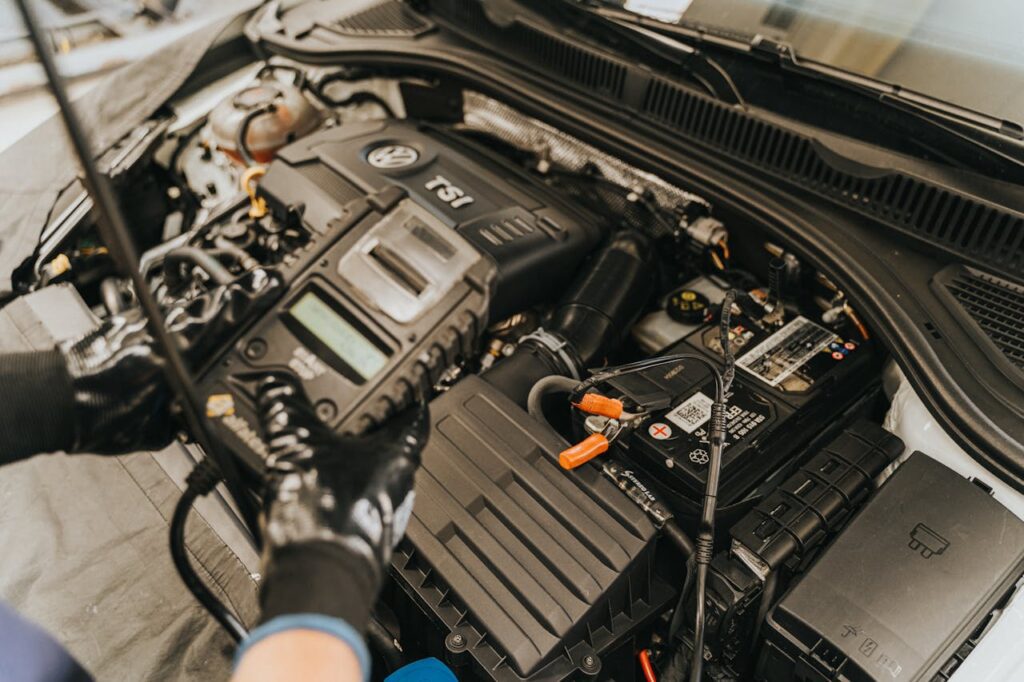How Does A Lead Acid Battery Work?
A lead-acid battery works by converting chemical energy into electrical energy through a reversible chemical reaction between lead dioxide (positive plate), sponge lead (negative plate), and sulphuric acid (electrolyte).
During discharge, lead dioxide and lead react with sulphuric acid to produce lead sulphate, water, and electricity. When recharged, this reaction reverses, restoring the original materials and allowing the battery to be used again. Lead-acid batteries are commonly used for their reliability in vehicles, backup power, and energy storage applications.
Who Invented The Lead Acid Battery?
Lead-acid is the oldest rechargeable battery in existence, dating back to 1859 where it was invented by the French physician Gaston Planté. It was the first rechargeable battery utilised for commercial use, including motor vehicles.
Where Is The Lead Acid Battery Used?
Lead-acid batteries are incredibly versatile and widely used across various sectors. Common applications include:
- Automobiles: Lead-acid batteries are the primary power source in traditional internal combustion engine vehicles, providing the energy needed for starting, lighting, and ignition (SLI).
- Backup Power: They are commonly found in Uninterruptible Power Supplies (UPS) systems as reliable backup power for computers, data centres, and emergency lighting.
- Renewable Energy Storage: Lead-acid batteries store power generated from renewable sources like solar and wind, where their durability and cost-effectiveness are highly valued.
- Industrial Applications: Lead-acid batteries are used in forklifts, golf carts, and heavy equipment that require reliable power for extended periods.
- VRLA Batteries and AGM Technology: Valve-Regulated Lead-Acid (VRLA) batteries, including Absorbed Glass Mat (AGM) types, are sealed versions that prevent leakage and require minimal maintenance. VRLA and AGM batteries are preferred for applications needing high performance in small spaces, such as in marine and aviation.
Factors Affecting Performance and Battery Life
- Discharge Rate: A high discharge rate can result in faster depletion of the battery, causing a quicker build-up of lead sulphate on the plates, which can ultimately reduce battery life.
- Surface Area of Lead Plates: The surface area of the lead plates directly influences the battery’s capacity. A larger surface area allows for a higher chemical reaction rate, thus increasing the power output and efficiency of the battery.
- Fully Recharged Maintenance: Regularly bringing the battery to a full charge can help prevent sulfation and ensure that the lead plates are restored to their optimal condition, extending battery life and preserving capacity.
- Temperature Sensitivity: Extreme temperatures can also impact lead-acid battery performance. High temperatures may accelerate chemical reactions, but they can also reduce battery life, while low temperatures can limit power output.
Lead-acid batteries continue to be an essential part of the energy storage landscape due to their reliability, relatively low cost, and high surge capacity, making them ideal for starting engines and delivering power in demanding environments.
If you are looking for safe disposal and recycling of lead acid batteries, our team is here to help. We can provide quick collections for a range of battery types, having businesses have access to safe, sustainable waste management solutions.


